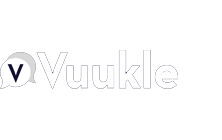
Danielle Koffler, Director of Product • 1 minute read
Hope Isn't a Strategy: Who Pays When Ad Tech Stalls on Transparency?

This Cybersecurity Awareness Month, let's talk about what collective strategy actually looks like and who pays the price when we get it wrong.
The economic model of the web depends on advertising. The social contract that sustains it depends on trust. And trust, at this scale, requires more than good intentions. It requires coordinated, standardized, and transparent standards with collective responsibility.
At Confiant, we focus on ad quality and security. A few years ago, we supported buyers.json, an IAB Tech Lab initiative designed to bring transparency to the buy side of programmatic advertising. It would have given publishers visibility into who was buying their inventory, making it exponentially harder for malvertisers to jump from DSP to DSP after being caught.
Its companion standard, the DemandChain Object, reveals every entity involved in each transaction. Together, they create end-to-end accountability. Publishers could trace malicious ads to their source and block bad actors systematically.
The concept works. The incentives didn’t. So adoption didn’t go anywhere.
Transparency only works if everyone participates. Individual companies doing the right thing isn't enough when threats move across an entire ecosystem. We need standardized protocols. Clear accountability at each transaction point. Shared responsibility for the infrastructure we all use.
While we stall on adoption and collective alignment, real people are losing real money to scams served through legitimate ad infrastructure. The question isn’t whether we have the technology to stop this. We do. The question is whether we have the will to align interests, standardize frameworks, and accept collective responsibility for an ecosystem we all depend on.
Right now, hope is AdTech’s strategy. But hope doesn't protect the person who just clicked on what looked like a legitimate ad and lost their savings. Let's change that.



